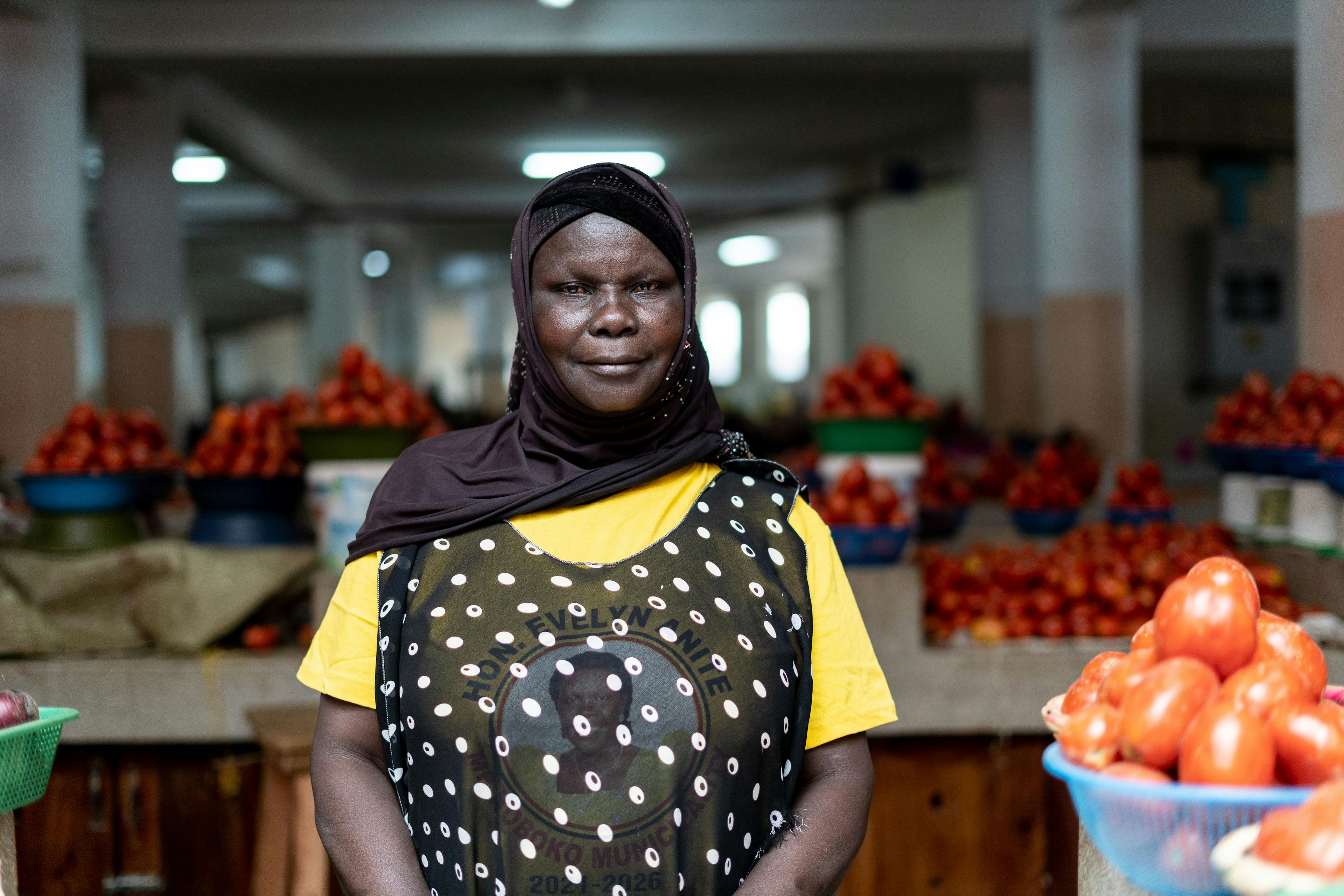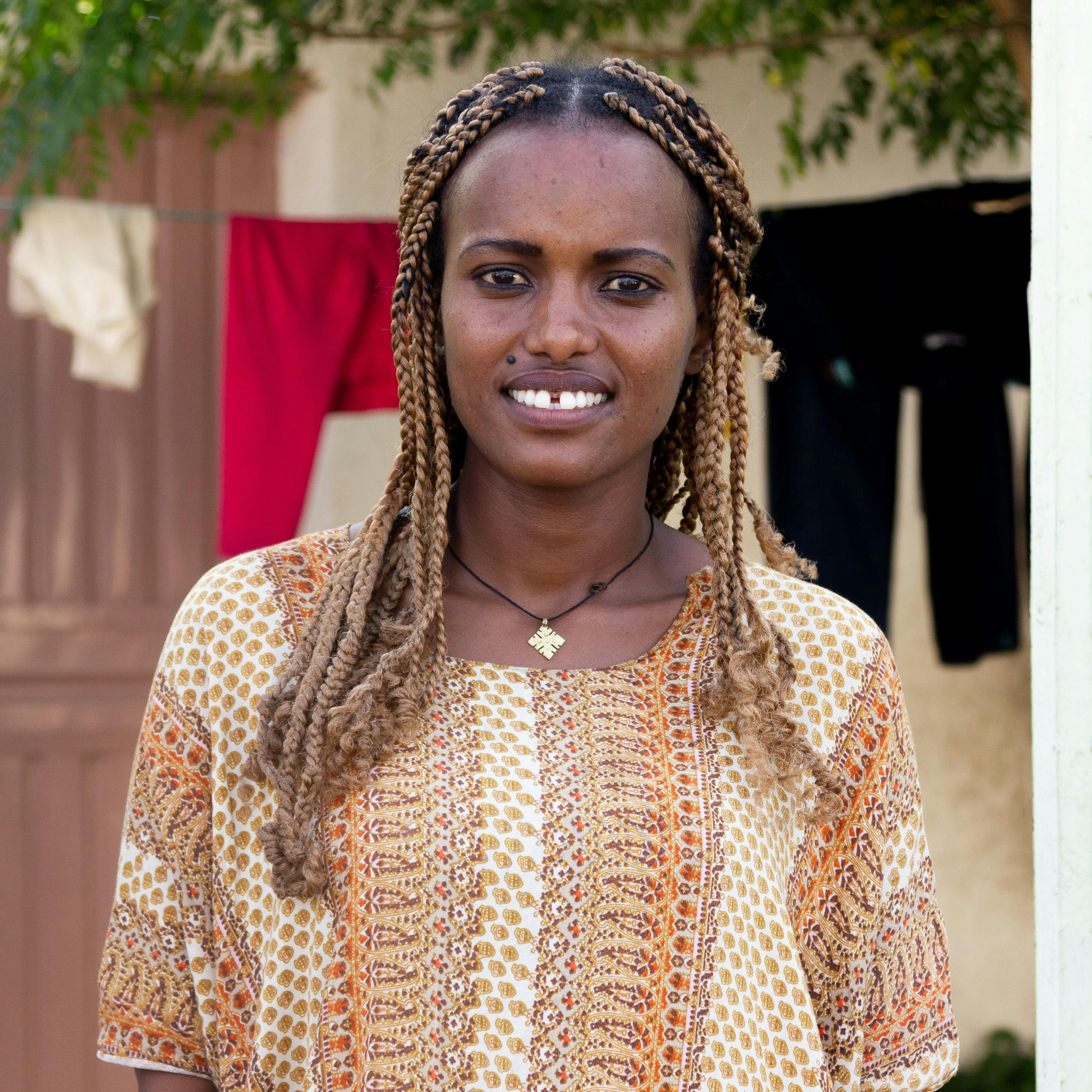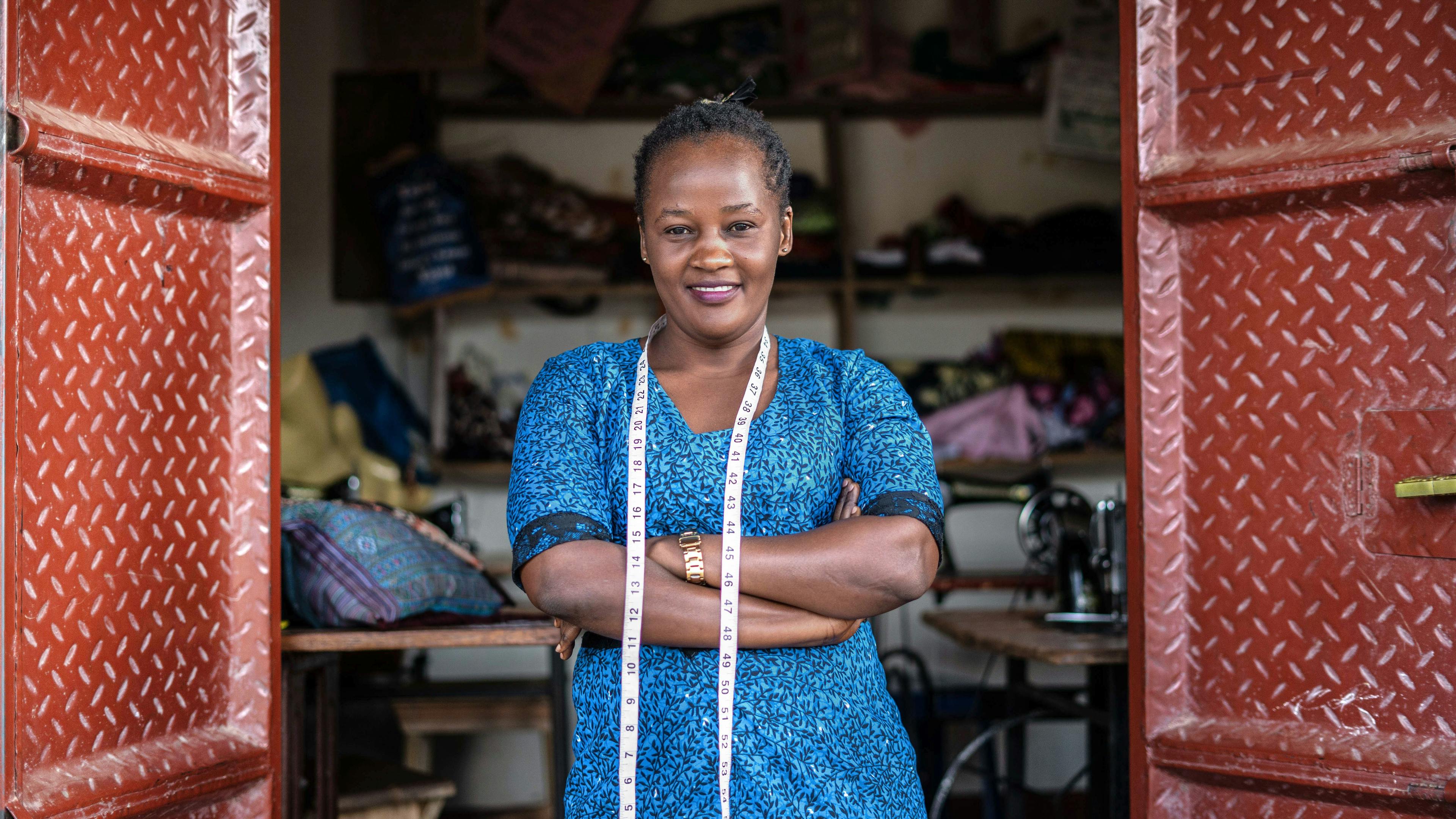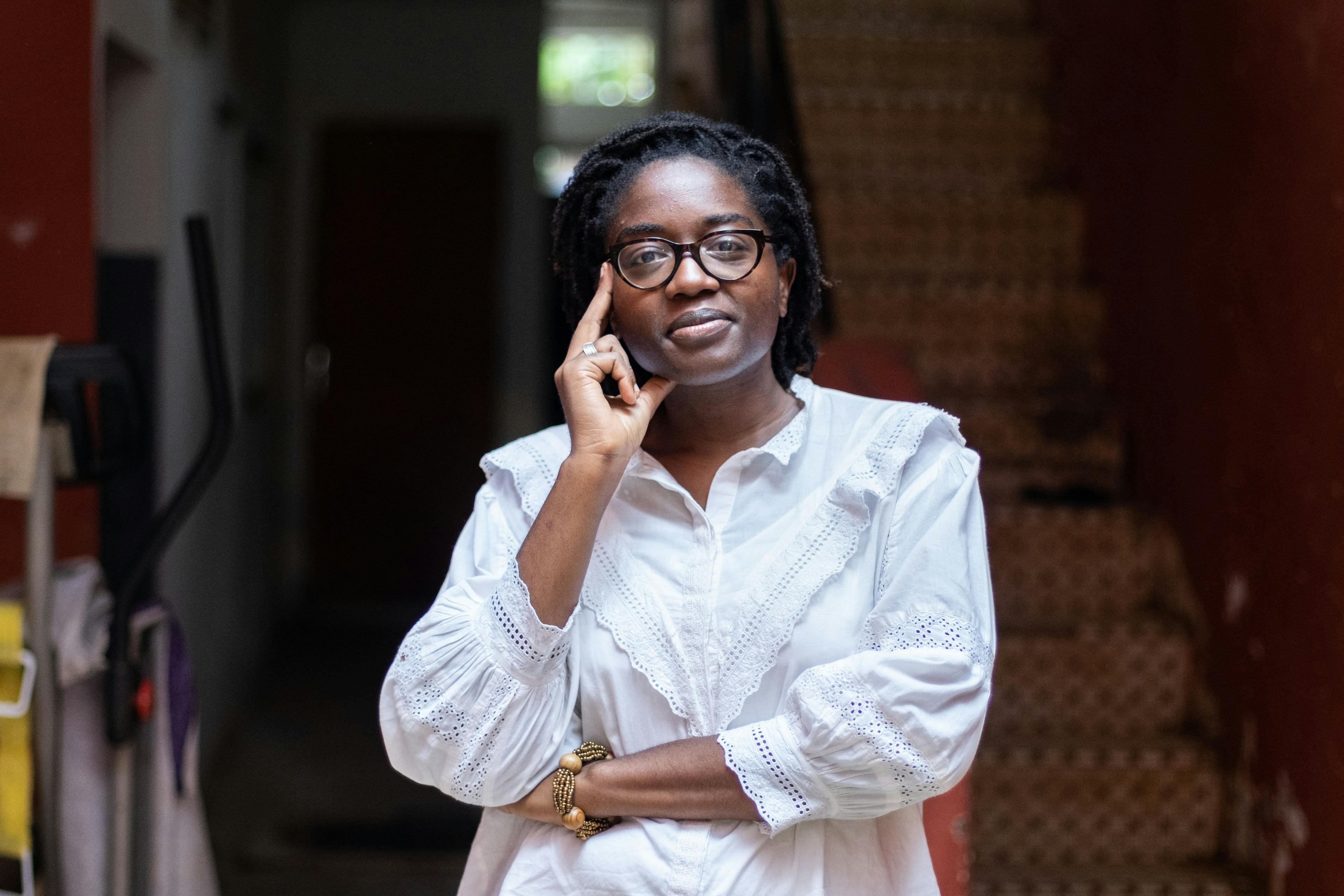Voices from thefrontlines
Climate change is reshaping our world and exposing Africans, across the continent, to increased hardship. How can its people be empowered to face climate shocks and stressors and make informed decisions to move or stay now and in the future?

On the forefront • 4.3
Womenat risk
Womenat risk
Risks for women worsen with climate disruption, whether they stay or move
Introduction
Women are hobbled by traditional gender roles and attitudes. They often have less say over responses to climate shocks and decisions to move.
Ensuring that women are not left behind after 54 thousand people may leave Ouahigouya (Burkina Faso) and other climate mobility hotspots that today host refugee camps will be a priority to reduce their vulnerability. Strategies to reduce women vulnerability will help those who remain and those who will seek for reduced climate risks elsewhere.


Beira, Mozambique
Albertina Lopes (45), produce trader
Lopes moved from Lugela, central Mozambique, and sells fresh fruit and vegetables at a local market. Women informal traders like her are generally vulnerable to climate risk. She feels unsafe as an outsider in the city.

West Hararge, Ethiopia
Hirut Seyfu (21), mother, breadwinner, carer
Seyfu has not heard from her husband since he went job-hunting in Addis Ababa, after they sold their farm during the drought. She now cares for her frail mother and two children, but is also the breadwinner, washing laundry in the neighbourhood.
Gender barriers can make it harder for women to move
Gender roles, relations, norms, and expectations significantly affect women’s and men’s decisions to migrate and their experiences of migration in the context of climate change. In Ethiopia, drought has been linked to decreased marriage-related mobility for women. The ACMI research found that more women had moved previously (presumably for marriage) than men, but fewer expected to move in the future.
Figure 1
Women may be more reluctant to move than men.
Question: When thinking about mobility, which of the following applies to you as an individual?
Percentage of respondents per gender and category
Women
Men
Source: ACMI Survey data, 2022. Based on survey from 6 locations in Africa. Over 100 households surveyed, 2% of women and 4% or men responded with don’t know or refused.
Moving is often a last resort for women
When people flee to safety in situations of imminent disaster, whole households tend to move, or at least women and children get priority. For instance, when Cyclone Idai struck Beira in Mozambique, women and children were evacuated first. However, in the context of more gradual climatic changes, women are often less likely to move than men, especially when they are married with children or have elderly relatives to care for. They are also less likely to be involved in decisions related to addressing climate risks, including whether and when to leave home.

Hargeisa, Somalia
Najah Hussein (24), social worker
Hussein left the pastoral life behind when she moved to the city to further her studies. She has veterinary training, but now makes a living as a social worker and sends money to her family in the countryside.

Dakar, Senegal
Attawa Coscia Atta (38), mother
Atta, from the Ivory Coast, is ‘mother and father’ to a teenager. Her partner left for Morocco to start a business and sends money monthly but it is not enough to make ends meet. Like other women left behind, she faces additional responsibilities.

Dakar, Senegal
Salimata Sabaly (30), food outlet worker
Sabaly and her husband struggled after moving to Dakar. He left in search of work, and she stayed behind. He is in Europe now, but she does not know where. She is making a life for herself and works in a fast-food joint.
Women face serious risks as climate impacts escalate
Women are roughly 14 times more likely to die in a disaster than men. While disasters strike everyone, women in Africa are more vulnerable because they tend to have a lower socio-economic status. They are more often illiterate, poor, and food insecure. The impacts of climate hazards are particularly harsh for those women who are sole breadwinners, who rely on small-scale farming to feed their families or work in the informal economy.
Figure 2
Women tend to perceive more frequent impacts from extreme climate events than men living in the same location.
Question: How many times in the past 10 years have flooding resulted in damage to homes, buildings, crops or roads?
Percentage of respondents per gender and category
Women
Men
Source: ACMI Survey data, 2022. Based on survey from 6 locations in Africa. Over 100 households surveyed, 2% of women and 4% or men responded with don’t know or refused.
Women who stay behind face additional burdens
When men leave to tend to livestock or seek work in the city, women often stay behind and take on new responsibilities, including those traditionally carried out by men. Women also have to carry on with their usual household tasks, such as collecting water or firewood, which may become harder as the environment around them becomes more degraded. These traditional and expanding responsibilities can expose women to new security risks, including sexual and gender-based violence, or create additional barriers to education. Increasing burdens often occur within the confines of discriminatory legal frameworks that exclude or marginalise women in land tenure or property rights.
Figure 3
Women tend to perceive impacts of climate events like flooding in their households more negatively than men.
Question: How would you say the situation relating to flooding impacts on your household?
Percentage of respondents per gender and category
Women
Men
Source: ACMI Survey data, 2022. Based on survey from 6 locations in Africa. Over 100 households surveyed.
Figure 4
When considering climate risk like flooding, women’s outlook for the future is more negative than men’s.
Question: Looking to the future, how do you think flooding will affect the situation for your household in the coming 5 years, if you stay here? The situation will...
Percentage of respondents per gender and category
Women
Men
Source: ACMI Survey data, 2022. Based on survey from 6 locations in Africa. Over 100 households surveyedcc, 22.7% of women and 19% or men responded with don’t know or refused.
Women use social connections and knowledge resources creatively to innovate and adapt
When men move away from rural areas, it can increase women’s work burden, but also their autonomy. Even though women and female-headed households are generally poorer and more at risk than men and male-headed households, women can be more resourceful in their individual and collective responses to stressors. They may have more social capital to draw on when they stay in their home situations. For example, female-headed households in South Africa often diversify their food and income sources in times of difficulty by turning to natural resources and other local, small-scale sources of self-employment. And, while women on the continent have an overall lower awareness of climate change than men, they are more likely to take adaptation actions when they are made aware of climate change and given adequate climate information.

Arua, Uganda
Adrili Jilda (34), tailor, business owner, trainer
After Jilda’s flight from war-torn South Sudan, she settled in Arua, saved to buy a sewing machine, and now runs a tailoring business. She trains other refugees, whose numbers may grow as climate disruption adds to existing stressors driving displacement.

Dakar, Senegal
Raissa Njoya (34), aspirant art curator
Like many other young, educated Africans, wanderlust and cultural curiosity prompted Njoya to travel. She moved from Douala, Cameroon — where she felt ‘stuck’ — to Dakar. Even though French-speaking, she still finds the social codes and gender roles here challenging.

Hargeisa, Somaliland
Lucky Osman (31), founder of a women’s resource centre
Osman’s resource centre focuses on educating girls, since the number of women in employment here is low compared to men. Her relatives in the Sarar region have ‘lost everything’ as drought has claimed most of their livestock.
The Way Forward
Targeted actions are needed to ease the climate adaptation burden for women, especially caregivers and female headed households.
Relevant measures include expanding social protection and health services; safe access to water, sanitation, and renewable sources of energy; and climate information and agricultural extension services for women active in smallholder agriculture and livestock keeping. Women and girls should be prioritized in climate literacy and green economy training and employment opportunities to improve their adaptive capacities in the face of increasing climate risk. States also need to cooperate and engage whole-of-society efforts to improve the legal, social, and physical protection of women on the move, including cross-border traders, migrant, refugee, and displaced women, as well as returning women.
Chapter 5
Stepping into tomorrow
Harnessing hope and mobility for climate resilience
